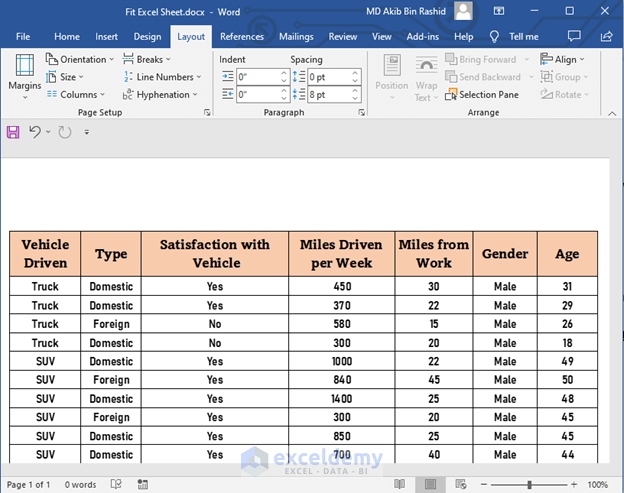5 Simple Tips to Fit Excel on One PDF Page on Mac

When working with Microsoft Excel, presenting your data in a compact and organized manner is crucial, especially when sharing it as a PDF. Fitting your Excel spreadsheet onto one page can be challenging but mastering this skill not only makes your documents look professional but also ensures that your audience can easily digest the information. Here are five simple tips to help you fit your Excel data on one PDF page on a Mac:
Adjust Page Layout

Start by navigating to the Page Layout tab in Excel. Here, you can:
- Change the Orientation to Landscape if your data is too wide.
- Reduce the Margins to maximize the space for your data. Go for a Narrow setting or customize them.
- Use the Print Area to select only the necessary cells. This ensures you're only printing what's relevant.
Scale Your Document

Sometimes, even with optimal page layout settings, your data might still not fit on one page. Here's where scaling comes in:
- Under Page Layout, select Page Setup and click on Options. Here, you can adjust the scale percentage or choose Fit to where you can set to fit the contents to 1 page.
- A lower scale might make the data hard to read, so balance between fit and legibility.
💡 Note: Do not set the scale so low that text becomes unreadable.
Shrink to Fit

If scaling isn't enough, Excel offers a feature called 'Shrink to Fit':
- Select the rows or columns you want to adjust, go to Format Cells, then Alignment tab.
- Check Shrink to fit to automatically reduce the size of the content to fit within the cell.
Manual Adjustments

Manual formatting can significantly impact how much data fits on one page:
- Merge Cells: If you have headers or titles, consider merging cells to avoid wasting space.
- Font Size: Decrease the font size where possible, but ensure readability.
- Delete Unnecessary Data: Remove any blank rows, columns, or repetitive headers to conserve space.
Print Preview and Tweaks

Before converting to PDF, use Excel’s Print Preview:
- Access Print Preview by pressing Cmd + P.
- If your data does not fit, revisit the steps above, making small adjustments until you achieve a fit.
- Remember to check Page Break Preview to see how pages will break if multiple pages are required.
Once you've applied these tips, your Excel document should be ready to fit onto one PDF page. Here’s how to proceed:
- Click on File > Print.
- In the print dialogue, select Save as PDF. Ensure that the page layout and scaling settings are correctly applied.
- Review the preview, make any last-minute changes, and then save the document as a PDF.
By applying these simple yet effective tips, you can transform your Excel sheets into compact, reader-friendly PDFs without compromising the integrity of your data. These methods not only make your documents look professional but also ensure they are accessible and easy to review for anyone who receives them.
Why does my data spread over multiple pages even after scaling?

+
This can happen if there are hidden rows or columns or if the print area is larger than anticipated. Review your document to ensure that all unnecessary data is removed, and only relevant data is included in the print area.
Can I change the PDF orientation in Excel?

+
No, the PDF orientation is set by Excel’s page layout. To adjust the orientation, you need to do it within Excel’s page setup settings before converting to PDF.
How do I ensure that the PDF looks exactly like my Excel sheet?

+
Make sure to review your document in the Print Preview. Adjust page breaks, margins, and scaling as needed. Also, check for any misaligned text or images, which might not translate well to PDF format.
What should I do if my data is still too wide to fit in one page after these tips?

+
If data remains too wide, consider using Excel’s Page Break Preview to see how pages will break and rearrange your data or consider using a larger paper size if your printer supports it.